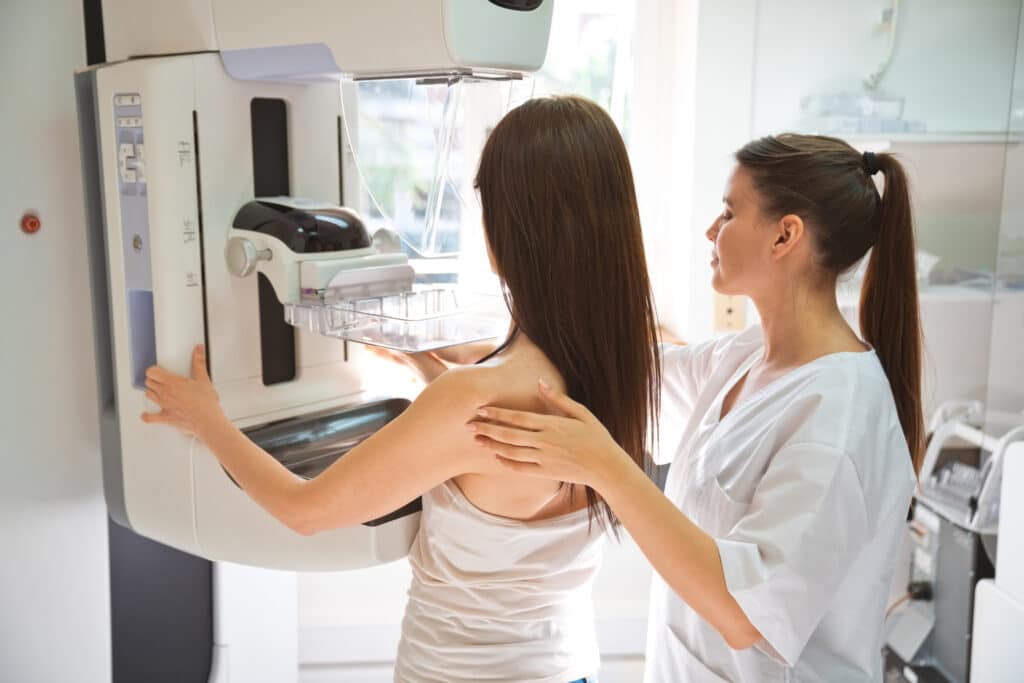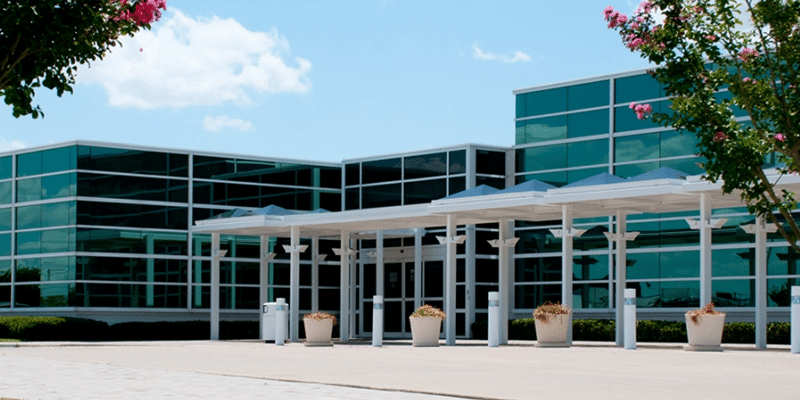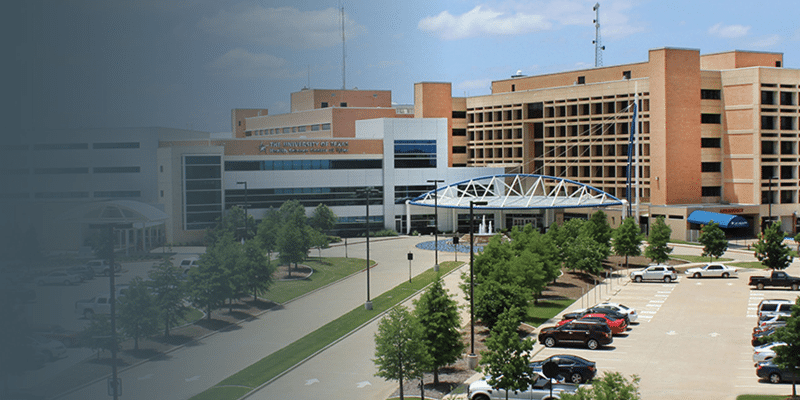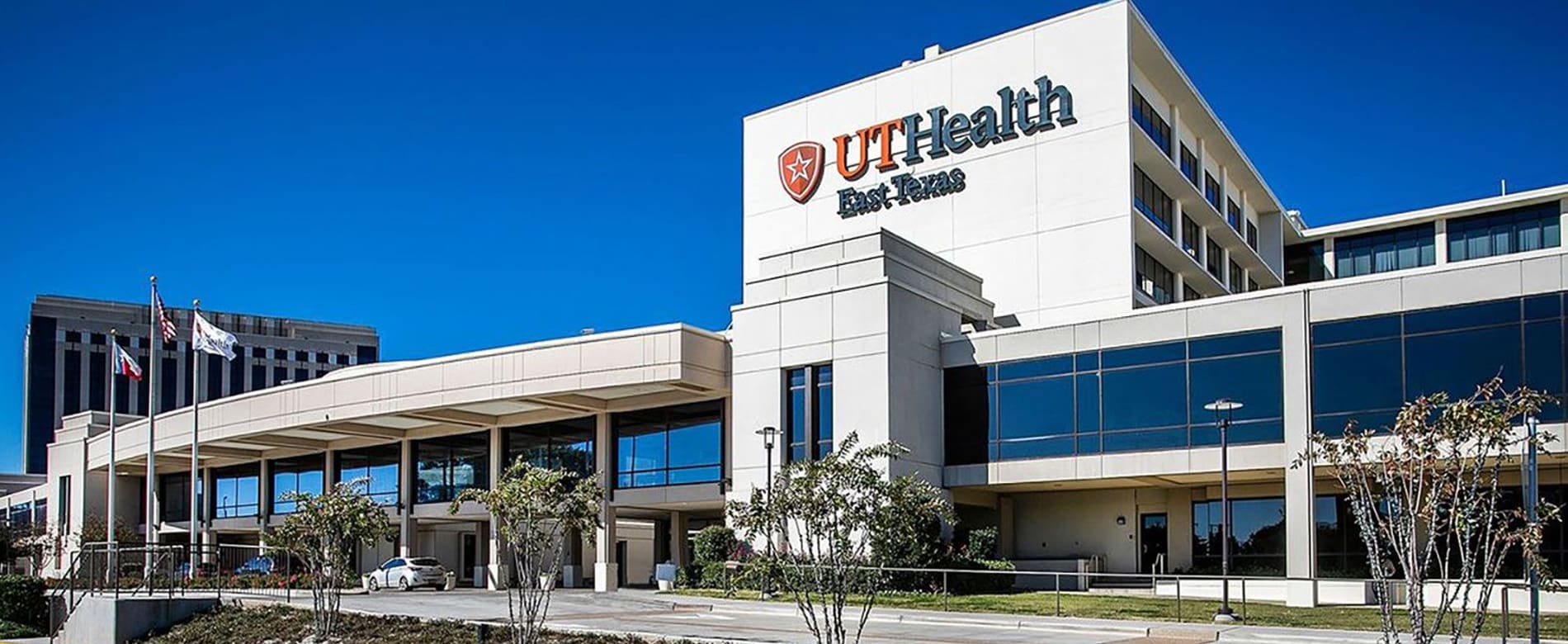Mammogram specialists in East Texas
At UT Health East Texas, we are dedicated to providing exceptional breast health services across East Texas. Our HOPE Breast Centers specialize in comprehensive breast cancer care, from early detection with advanced 3D mammography screenings to expert treatment guided by our skilled breast care specialists. We also offer a variety of breast surgery treatments, including reconstructive and cosmetic surgery. Whether you need a routine breast health screening, reconstructive surgery, or ongoing treatment for breast cancer, our team ensures a supportive and informative experience. Utilizing the latest technologies and personalized care plans, we are your committed partner in maintaining and improving your breast health at every stage.

Our breast imaging and diagnostic services
At UT Health East Texas, our breast health team provide comprehensive breast imaging services to help you stay ahead of your breast health. Our tests include:
- Bone density tests — During this simple test, the patient lies on a padded table while the unit scans the body. No injection or invasive procedure is involved and the patient remains fully clothed. This test can detect osteoporosis and provides your doctor with information regarding your bone strength.
- Breast MRI — Magnetic resonance imaging (MRI) is a supplemental test that helps your doctor diagnose breast cancer. It is often used to investigate breast problems first detected by mammography or other imaging exams. Younger women at high risk of breast cancer also may benefit from this screening. MRI uses powerful magnetic fields and radio waves to create images of the breast.
- Breast ultrasound — An ultrasound of the breast is used to confirm the presence or absence of a mass in women who have dense breast tissue, which could make the mass difficult to see. Ultrasounds use high frequency sound waves to scan the tissue of the breast. Radiologists sometimes use this painless method to distinguish fluid-filled cysts from solid masses.
- Digital mammography — Digital mammography is the best tool for early detection. We offer digital and 3D mammography, offering sharper images than film and no wait time for film to be developed. The computer enhancements help detect signs of early cancer, as well as abnormalities in dense breast tissue.
- Genetic testing — Genetic testing can help determine if you’re at increased risk of developing breast or ovarian cancer due to your family history.
- Mobile digital mammography unit — The mobile mammography unit offers breast tomosynthesis, also called 3D mammography and DBT, an advanced form of breast imaging which uses a low-dose X-ray system and computer reconstructions to create three-dimensional images of the breasts. Breast tomosynthesis aids in the early detection and diagnosis of breast tissue.
- R2 ImageChecker computer-aided detection system — The ImageChecker scans mammogram films and marks areas of calcification, distortion and small masses, producing a video display which clearly indicates potential abnormalities requiring further study.
- Stereotactic breast biopsy — This minimally invasive procedure requires only a quarter-inch-long incision, with no stitches needed. Using an ultrasound probe or an X-ray, the doctor gently vacuums out tissue for examination. Tissue samples collected using this process are just as reliable as open surgical biopsies and three times more accurate than core needle biopsies in the diagnosis of conditions associated with early breast cancer.

Schedule your mammogram online
3D mammograms
The best way to detect breast cancer early is with a mammogram. Screening guidelines recommend women ages 35-40 to get their mammogram and women over 40 to get one annually. There are two types of mammography: 2D digital mammograms and 3D mammograms.
3D mammography, also known as digital breast tomosynthesis (DBT), enhances your radiologist’s ability to see through breast tissue more effectively than traditional 2D mammograms. This technology captures images that can be divided up into multiple layers, which the radiologist can examine one at a time. This minimizes the overlapping of tissue, which helps your radiologist detect smaller cancers that may be harder to find at an earlier stage.
The 3D mammogram procedure is very similar to that of a 2D mammogram. It still involves compressing each breast in two different positions. However, the operation of the machine differs. Instead of the camera staying stationary as it would during a 2D mammogram, the 3D mammogram camera makes a small arc as it takes photos, which takes about three to four seconds. This movement allows the radiologist to later view the breast tissue in slices, providing a clearer and more detailed image.
3D mammography is offered at the following locations:
- On the mobile mammography unit, which also travels to surrounding areas in East Texas
- Tyler at the UT Health East Texas HOPE Breast Care Center
- UT Health Athens
- UT Health North Campus Tyler
- UT Health Cedar Creek Lake
- UT Health East Texas Physicians on Patriot Drive
- UT Health Hendersonville
- UT Health Jacksonville
For mammogram scheduling at our Breast Care Centers or mobile locations, please call 903-531-8000.
Breast cancer treatment
Breast cancer occurs when abnormal cells invade healthy cells in the breast. These cells group together to form a mass of tissue, also known as a growth, lump or tumor. The cells can then spread, affecting other areas of the body as well. There are several types of breast cancer, determined by the cells affected. The most common are invasive ductal carcinoma and invasive lobular carcinoma.
Breast cancer affects one out of every eight women in the United States. While it’s not completely preventable, it is important to know your risk and the early signs to catch it as early as possible. The exact cause of breast cancer is still unknown, but there are several associated risk factors, including genetic and environmental.
At UT Health East Texas, we provide comprehensive breast cancer treatment at our HOPE Cancer Centers. Click here to learn more about breast cancer and the treatments we provide at our cancer centers.
Cosmetic and reconstructive breast surgery
Cosmetic and reconstruction services are offered through the UT Health East Texas Cosmetic Surgery Center. Our board-certified plastic surgeon, Dr. Paul Critelli, works with patients to develop a customized plan to meet their needs and goals. For breast reconstruction procedures, Dr. Critelli meets with patients early in the treatment process and works with your oncologists and surgeons to optimize your cancer treatment and reconstruction, producing unparalleled results.
Cosmetic procedures such as breast reduction, breast augmentation, breast lift and breast augmentation with lift are also offered. Learn more about our cosmetic and reconstructive surgery services offered at the UT Health East Texas Cosmetic Surgery Center.



